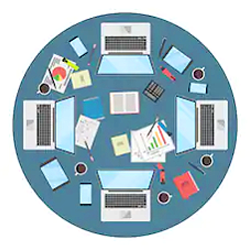What is Remote Access?
Clocking in and out at work isn't how businesses operate these days. Business emergencies can pop up at any time, and there's no telling if they can be addressed immediately. If your employees find themselves dealing with a business demand outside of working hours, how would they be able to meet them effectively? Times like this call for the need for remote access. In this guide, we'll detail what is remote access and how it can be achieved these days.
Definition of Remote Access
What is remote access? This technology refers to the ability to control another computer remotely. This means that users can connect their local device to a remote computer (or sometimes referred to as a host device) from a distant spot. The remote connection established between the two devices will enable the local user to access the remote computer as if he is in front of its screen. From there, he can perform several computing tasks as required. He can manage apps, troubleshoot issues, and install updates.
In a corporate point of view, remote access acts as a tool that enables employees to connect to their corporate networks remotely. This means that workers can still access their office files even outside of their office. Teams and colleagues from different branch offices can also exchange information from one another using remote access. Businesses that embrace remote working also find the need to use this technology to manage remote workers effectively.
There are a couple of ways for you to achieve remote access. However, in this article, we've only gathered three of the most commonly used remote access solutions. Here are them:
Virtual Private Network (VPN)
One way of achieving remote access is through Virtual Private Network or VPN. It is one of the most secure ways to establish remote access on your end. VPN access allows employees to connect to a private corporate network from a distant spot using a local device. It also enables users to establish a remote connection even outside of a private network. The thing with VPN is that it's quite hard to establish. You may need some level of IT expertise to create one.
Remote Desktop Connection (RDC)
Remote Desktop Connection is Microsoft built-in feature that can be found in all Windows-running computer. This remote access tool allows users to access another computer remotely from a physically separate location. However, remote desktop connection, in general, can only be used on the same network. To connect to other remote devices using RDC, you need to expose your local computer to the internet.
Third-Party Software
The last remote access solution on this list is third-party software. This type of program, just like a VPN and RDC, provides users with the ability to access computing devices at a distance. The good thing about third-party software is that it is both safe and convenient to use. Just like a VPN, it encrypts any session made between the local and remote computers. It also allows users to connect to other devices outside of a local network. Remote access software, generally, is easy to use and configure. You just need to download and install it on both the local and remote computers.
Advantages of Remote Access
By knowing what is remote access, you'll be able to understand the benefits it can provide to your business. Remote access can be a tool dedicated to maximizing business efficiency and productivity. We'll take a look now at some of the key advantages remote access provides:
Efficiency
If you're looking for an easy way to maximize your business efficiency, then consider integrating remote access to your IT infrastructure. Remote access allows you to maintain business opportunities while saving big on overhead costs. In return, it allows you to maintain long term goals and success.
Productivity
Remote access allows your employees to stay productive 24/7. This means that they can still address business emergencies even outside of working hours. If something impedes them from being at their office, remote access helps them to complete their daily work routines.
Affordability
If your workers can work from home, you can cut overhead costs. This means that you don't need to spend a lot on office essentials and equipment. You also don't need to invest in a lot of office space as your employees can just work remotely.
Greater Satisfaction
Employees who have the privilege to work from home can maintain a healthy balance between life and work. This means that they have more time to spend for themselves and their loved ones. In return, it translates to a happier and more satisfied workforce.
Improved Attrition
If your employees are satisfied, they are less likely to leave their respective jobs. This means that your business can still stay productive where no work is left vacant and unfilled.
What is Remote Access – Conclusion
Remote access is truly a great business partner in a time when business emergencies need immediate solutions. With the help of this technology, you'll be able to maintain business opportunities and attain long term goals for your business. Now that we've defined what is remote access, it's time for you to embrace this technology for the future success of your organization.
Awareness about Remote Access is useful?
Share the wealth!

